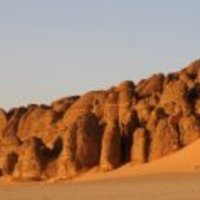Mohamed Hamdan
Cairo University, Geology Department, Faculty Member
L'indagine spaziale condotta nel territorio di Farafra, si e focalizzata da vari anni intomo al Wadi el Obeiyid nel settore settentrionale della depressione e, parallelamente, e andata sempre pili precisando il modello diacronico di... more
L'indagine spaziale condotta nel territorio di Farafra, si e focalizzata da vari anni intomo al Wadi el Obeiyid nel settore settentrionale della depressione e, parallelamente, e andata sempre pili precisando il modello diacronico di ricostruzione. Cia e stato raggiunto attraverso l'impianto di ricerche stratigrafiche applicate a insediamenti che, in forma del tutto eccezionale per abitati all'aperto, hanno mostrato una lunga sequenza di occupazione. La sequenza generale del Wadi el Obeiyid ha permesso di riconoscere tre fasi successive, direttamente correlate al cambiamento climatico e alla locale disponibilita d'acqua: fase A (6300-5700 a.C.); fase B (5650-5300 a.C.); fase C (>5200 a.C.)1. L'elemento di principale interesse, evidenziato dagli scavi nel villaggio proto-neolitico di Hidden Valley, e un' evidente maggiore elaborazione delle strutture di occupazione, l'intensificazione delle attivita di sfruttamento delle pi ante e, nel complesso, una pil...
Research Interests:
Introduction and Background The Fayoum Oasis is famed for its orchards and monuments. It is also the site of one of the oldest state hydraulic projects and water management in the world. The subject of legends since Herodotus wrote his
Introduction and Background The Fayoum Oasis is famed for its orchards and monuments. It is also the site of one of the oldest state hydraulic projects and water management in the world. The subject of legends since Herodotus wrote his
